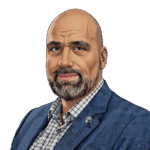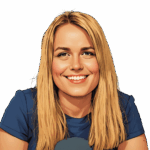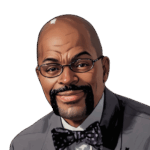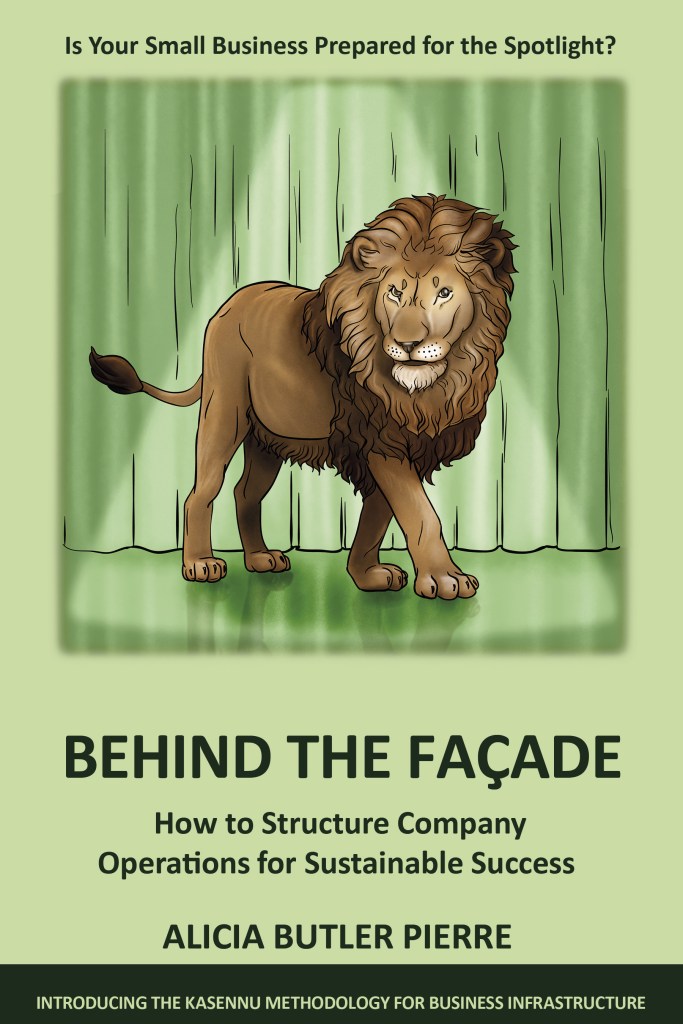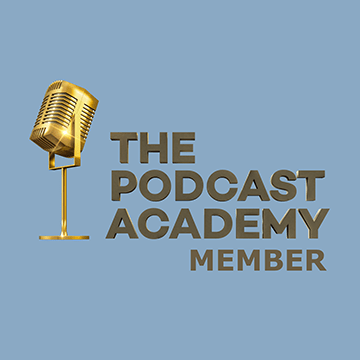Transcript
Welcome to Business Infrastructure, the podcast about curing back office blues of fast growing businesses. If you’re a business owner or operator looking for practical tips and solutions to scaling your business in a sustainable manner, you’re in the right place.
Now, here’s your hostess, Alicia Butler Pierre. Have you ever wished you had a Have you ever wished you had a What I love about this show is that they don’t just talk the talk, but they walk the walk too. Not only do Alexis and Brianne interview successful founders and innovators, but they have firsthand experience through their own backgrounds as business leaders and investors.
Sprinkled with a little comedy to really keep things interesting, listen, learn and grow with the HubSpot podcast [email protected] podcastnetwork having a tough time trying to explain ideas over a video conference? Try the Think Smart Whiteboard. It’s the fastest whiteboard software in the world and allows you to upload flowcharts and write on them while your colleagues are watching remotely. Call us today for a free demo. The number is 1-866-584-6804 or visit us online at getmytablet.
Now that’s smart. Think Smart. Hi there, it’s me, Alicia, and this is the final episode of season 13. If you’re a fan of the show, then you know I close out each season with a monologue.
If this is your first time listening, welcome. This episode is actually going to be part monologue and part interview. And the reason is because I recently had the opportunity to to attend the 2021 Podcast Movement Conference in Nashville, Tennessee here in the US and while I was there, I had the opportunity to meet and interview Kate Erickson. And you’ll learn all about Kate in just a few minutes.
She and I had a chance to take a deep dive into the business infrastructure that powers EO Fire and how their commitment to operational excellence ensures high quality and a relentless focus on their audience’s satisfaction. Now, if you aren’t familiar with what business infrastructure is, let me first take a moment to define it.
business infrastructure is, let me first take a moment to define it. Business infrastructure is a system for linking the people, processes and tools and technologies that allow you to scale sustainably and profitably. Now as for a definition of operational excellence, well, you’ll have to go back and listen to each guest unique perspective for that. It is worth pointing out though, that Each of the 12 guests this season. All stress the importance of having the right mindset.
They also talked about the importance of demonstrating appreciation for the people that work for you as well as your customers. Heck, everybody that makes up your ecosystem. Those are the ingredients necessary for operational excellence to not just be a thing to strive for, but something that’s actually imbued in everything you and your company does.
We even have two masterclasses on operational excellence from Dr. Jeffrey Leiker, author of the Toyota Way, and Dr. Frank Barsi. I encourage you to listen to all of the episodes from this season. I mean, there’s so much great information. Now back to Kate Erickson. I can’t wait for you to hear what Kate reveals about the back office operations at eofire. But first, let’s hear a word from the folks who are responsible for Kate and I meeting in the first place.
As companies scale systems break and data and segmentation that used to be relevant and personalized can quickly become stale and out of date. That’s where HubSpot can help. Its CRM platform helps businesses automate every process to reduce customer friction. Keep your team efficient and your customers happy by coding custom automation actions for every business process, including lead rotation, territory management, renewals and more.
You can even trigger actions in third party systems like Slack, Zoom and more directly from HubSpot workflows and and stay organized by quickly viewing, updating and managing team permissions, ensuring that everyone has access to all the assets they need at the right time.
Learn more about how you can scale your company without scaling [email protected] hello everyone.
We are here live at podcast Movement Conference 2021 in Nashville, Tennessee, and I am joined by a very, very special VIP guest, Kate Erickson. She is the heartbeat at EO Fire. You know, I’ve learned from a previous guest this season, Kate, to not refer to people like us as engines.
Really? Because it’s. It likens us to machinery and we’re human. It removes the human element. So I was like, you know what? I’m. Kate is the heartbeat I like this.
Yes.
Can I use that now?
Of course.

Because I literally do refer to myself as the engine.
I know. That’s what I saw that on your bio on LinkedIn.
Yes. Okay.
So you are the heartbeat, my friend.
I like that.
Yes.
Okay.
Because. And it’s true. It’s so fitting. So for those of you who are unfamiliar with CADE and an EO Fire, it actually stands for Entrepreneurs on Fire. And specifically Kate runs the back end of the business of the Entrepreneurs on Fire podcast. And just to give you some quick stats here, the EO Fire podcast to date.
They’re coming up on their 10th year in operation. Talk about an OG in the podcasting game. Some people didn’t realize podcasts have even been around that long. Kate.
So many people. That is amazing.
Over 100 million downloads. Can you imagine? 3,000, 240 episodes. That’s a lot of talking. A lot.
And, and it’s John.
But I know you have your own podcast as well.
I do.
nd I do want you to talk about that too, if you, if you don’t mind toward the end. So here’s the thing. When you hear numbers like this, it might seem completely unachievable, right. Especially if you are looking into podcasting or any business venture if you want to start your business.
But that’s exactly what Kate and John, the actual host and founder of eofire, this is what they’re all about, inspiring millions. So we’re hoping over the next few minutes, because I know we can’t do a full full on podcast interview, but we’re hoping that you will walk away after listening to this episode. Inspired.
Inspired to start that podcast, start that new business, leave that 9 to 5 corporate job behind. Every great business is a great process. And so Kate’s going to give us a sneak peek behind the curtain of EO Fire. So let’s get started. Kate, I noticed you have an advanced degree in English literature.
I do.
I was like, how did she go from an advanced degree in English literature to. I noticed some of your first jobs were in marketing and then you were in the banking space. Can you tell us a little bit about that? How you made that transition and then ultimately how you became the chief implementer?
Yes. Yeah. So my love has always been English. Well, actually, sorry, not always. I was a sophomore in college and my counselor said, you need to choose a major or else you’re not going to graduate in four years. So I just thought of who my favorite teacher was and he happened to be my English professor. And so I was like, I will become an English degree major. And then I graduated with that and. And I fell in love with the passion and the love that my English professors had for the subject.
And I love to read and I love to write and I love to dissect stuff. And so I thought, I want to do that. I want to feel the way that they feel about what they do. And so my dream became to be an English professor. And so that’s why I continued on to get my graduate degree so that I could be a professor out of college. And that happened at not an ideal time for the education system and the economy as a whole. It was 2008 when I graduated with my master’s, and so a lot of teachers were being pink slipped, and there was not a lot of money in the education system at that time because of budget cuts and everything. And so I got into marketing and advertising, and I loved it.
I loved the excitement of it, I loved the creativity of it. And I started pulling all of my obsessions with organization. And I was an account executive, so I was basically the person in between the client and the agency’s creative team. So I. I became like a master project manager, essentially, of trying to hit deadlines, keep everybody on the same page, try and best communicate to the creative department what the client wanted and vice versa. And I just fell in love with systems and processes and how to work efficiently, because so many things in marketing and advertising, people want to be creative and they don’t want to be on schedules, and it doesn’t work that way.
And I’m like, but no, it has to, because the magazine needs it now. And so I just kind of fell in love with. I became obsessed with being better at being that mediator. And when John. When John started Entrepreneurs on Fire, he is excellent at systems and processes as well, but it wasn’t allowing him to exercise his vision and ideas and creativity in the way that he knew he could. So he asked if I wanted to join the team and kind of be that for the company so that we could actually start to launch products and services and. And serve our community at a whole new level, not just with the podcast, but with masterminds, with online courses and all of that. So that is a shortened version of. Of how it. How it came along.
That is amazing. And so for those who are listening right now, Kate, who may not be familiar with the Entrepreneurs on Fire podcast, can you tell us a little bit more about the podcast as well as the business itself?
So in 2012, John had an idea to create a podcast that would inspire listeners to believe that they could create a business and from that business, create lifestyle and financial freedom. He was inspired in that way by podcasts that were interviewing entrepreneurs. And it was really what got him to the spot of, hey, wait a second, I have this idea.
want to do this. His differentiator at the time was that he was listening to these podcasts when he was working in commercial real estate. And he was being inspired by these stories of people who were, you know, forging their own path and leading the life that they wanted to lead, making their own choices, not choices based on what their manager wanted them to do or expected of them.
But those podcasts were only coming out, like, once every other week. And so he was just, like, hungry for this content. So he decided to launch the podcast that was doing it daily. So he started interviewing entrepreneurs daily, releasing an interview daily.
He wasn’t actually interviewing people every single day. You know, he would batch, and he has all these great systems, which I’m sure we’ll get into. But his idea was to be that inspiration for others, because that’s what helped him. So he launched the podcast in 2012. September. And by April 2013, I had joined the team. And in 2013, we launched our first mastermind, our first online course. And we started building a team, and the business just kind of started.
You know, it snowballed from there. It really became this thing that was. It was led by our audience, really. We were just listening to what our audience’s pain points and questions were. And luckily, we were in a position to. To be able to create the things that could help them in those areas.
That’s amazing. And it just shows the power of podcasting. Right. It all started with that idea. He went out on a limb, started this podcast, and then brought you onto the team to run all of the back office operations. And it’s great because I know we had a season previously just on COOs, the number two. Right. So I love the fact that you mentioned CEOs.
We are the visionaries, the big picture thinkers. It’s the CEOs who are making sure that that vision is actually executed. So you did a tremendous job at your keynote speech at this conference. Again, this is the Podcast Movement conference where we’re recording live. I was amazed, Kate, at your ability to condense your entire workflow in less than 30 minutes. And it was a lot of information, but it was so well organized.
It flowed so nicely. And I was like, ooh. And I took all kinds of notes. And just for everyone who’s listening, we will make sure that we have a link to that actual workflow. And I noticed you use suite process, so I definitely want to ask you about that. So don’t worry, we will have a link to that, so you will be able to see that workflow.
But I’m wondering if we could Talk about your workflow in terms of business infrastructure. For those of you who are listening for the first time, business infrastructure is a system for how you link your people, your processes and your tools and technologies so that you can operate and grow sustainably and profitably.
So for the EO Fire, if we talk about the podcast itself, there were three main sections or stages, I guess, of the overall workflow. So as I recall, things that happen before the interview, during the interview, and then after the interview.
Yep.
So can you, I know it’s unfair to ask this, Kate, but can you, can you talk about what happens pre show, pre interview at a very high level?
Some of the other people that you may get involved on your team in those different activities that make up that pre interview process?
Yep, absolutely. So of course our workflow has grown and changed and it didn’t start out this way. This, like, imagine this nine years into running a business and you know how much changes and flows and ebbs and we find new tools and new systems and new ways to do things. So what I’m about to go over is something that we’ve been been building essentially and improving for nine years. But the first thing is finding great guests. Right.
If you’re doing an interview show, then it’s very critical that the people you’re inviting on it know what they’re talking about, are good speakers and are passionate about what they’re talking about.
You know from being a podcast host yourself that if the listeners aren’t, the listeners aren’t going to be engaged in content that’s just coming from someone who doesn’t care what they’re talking about. So finding great guests is so critical. And we’ve been through many iterations of. In the very beginning, John was going to Amazon and searching for authors and finding authors to bring on the show.
And he was going to events and conferences like Podcast Movement and meeting people in person so that he could see face to face and hear from in their voice. Like, are these people passionate about their topic?
And most people that are willing to invest in themselves and go to a conference, like, they are in it, they are passionate about what they do and they love talking about it. So that’s what he was doing in the beginning. Then it kind of morphed into. As the podcast gained traction and momentum became more popular, we now get over 400 people every single month reaching out, asking to be a guest on the podcast.
Wow. At episode 2000, John went from a daily show to a three time per week show. We switched up the format and Decided to change the flow of the show and we are now back to seven days a week because we have so many incredible people to bring on the show.
So finding great guests is the very first step. And as kind of like it’s the second step having an application process. I don’t know that this is a great step for people to put in place in the very beginning. But what it’s helped us do is vet efficiently. Otherwise what are you going to do with 400 requests, how would you, where would you even start? You’d have to have like an entire team just for that.
Yes.
So what we did is we put an application form in place where we ask very specific information. Any type of non negotiables that you have for your show would be great things to put on there to easy to easily and quickly kind of put people in camp A, B or C. So that application form has been really big for us.
So that is step two in our process. Step three is we have an online scheduler. So we use a tool called OnceHub. Do you, you use online scheduler?
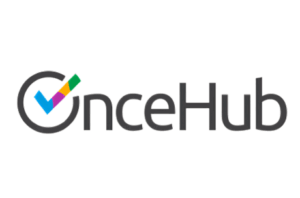 I do. Acuity.
I do. Acuity.
Acuity. Okay.
So once hub. Okay, that’s.
There are so many incredible tools out there and all of them are great. We’ve been using OnceHub for. It used to be called Schedule Once and Now it’s called OnceHub. And we’ve been using it since the very beginning. It’s a really great tool and it not only allows us to schedule efficiently. So not going back and forth a million times about I’m available this day and this time and then the other person isn’t and then you, you know, it’s like ping pong.
This scheduler allows you to create when you are available and you just send a link and the person is able to schedule the time that works for them. John batches his interviews so he has one day a month where all he does is interview for entrepreneurs on fire.
So if you were to go to his scheduler, you would see one day a month available from like 10am in the morning until 5pm at night. And he just fills that out. And depending on how far ahead we are, maybe he’ll throw in a second day a month or something.
But that online scheduler is so key. And just this is when I’m available, book your spot. And then as a part of that online scheduler, he’s also able to grab any information that he needs from his guests ahead of time. So their bio, their headshot, their website URLs and what we’ve started to do now with the show and the format that we’re working with right now.
We actually have our guests submit their recommended title for the episode and six to eight bullet points that they want to talk about during their interview. And that has. I really feel like giving your guests partial ownership over the content of the show makes a huge difference.
I, yeah, I feel like people, they feel more prepared, so they’re more confident and comfortable. They know that they’re going to be able to speak to, to their expertise, which is, you know, I mean, people of course are coming on the show to provide value, but they’re also coming on the show to promote their business.
So them knowing that they’re going to be able to talk about their business and their expertise is great. So that’s all a part of the online scheduling process. But it’s incredible when we get into workflows, that one step that seems very simple has so many things in the back end of it.
Right, Right.
So how am I pacing myself? Okay. Do you want me to go?
You’re doing well, but I’m sure you can see why my interviews are usually an hour because it’s such great content and I, and I, you know, I hate that we have to edit ourselves sometimes and cut some things out, but I do want to be respectful of your time. So, so those are activities. That’s a really great snapshot of what’s happening again before for the interview. So what about during the actual interview, Kate?
What’s going on during the interview? Having a pre interview chat. And this is literally just a checklist that you’re putting together so that you make sure every time before you hit record, you are prepared and your guest is prepared. Sometimes people come on the show and they don’t have a lot of interview experience. Maybe they’ve never been on a podcast before ever. And they have no clue what’s going on. So just to kind of help set them up, is your microphone selected correctly? Am I coming through okay? Am I pronouncing your name correctly? Do you have your notifications turned off?
Like all of these little pieces that seem like, oh, of course someone’s going to do that. But no, when you’re thinking, you’re thinking about how can I provide the most value? During this chat, you’re not thinking about whether or not your microphone is selected.
Right, Right.
So that’s the pre interview chat. Then of course the recording time where you’re just going to be totally in it and present and asking amazing questions and, and having a great conversation. Thinking about your audience and what it is that they want to hear.
John always loves to put himself in his audience shoes because the questions that John might want to ask could be very different from what his audience is thinking. John knows a lot of this stuff already, so he has to really put himself in a mindset of what if I didn’t know what this person was talking about right now, then what would I ask them? And then the Post interview chat.
So the Post interview chat is an opportunity to thank your guests, to give them appreciation and love for the time that they’ve shared with you and with your audience. Also, this is a great time to make sure that they know what’s coming next. Like you’ve just given this time. We had a great interview. When is the interview going live? What can they expect in terms of communication from you?
We love our follow up sequences. We have a lot of follow up sequences and our guest ones are so critical because for us, a huge part of our audience growth, especially in the beginning, was thanks to our guests sharing the episode with their audience.
That was a huge growth strategy for us in the beginning because we were interviewing entrepreneurs who already had businesses and who already had audiences and we didn’t. So every time we had a guest share their episode, it was like a whole new batch of listeners for us. So that communication that, that post interview part of the communication is super critical.
Absolutely. Are there any other team members that are getting involved during the time of the actual interview or is it just John and the guest?
Not during the actual interview, but with the emails? So we have that email sequence that I’m referring to that goes out to the guests to remind them of that. The interview is coming up. This is where you’re going to meet John. This is what you should have prepared. And then the post can communication. Those are all templates that we have set where we have team filling in the blanks.
Okay.
So all of those email communications are not only templates, but we’re also scheduling them out. And Boomerang. Boomerang is like one of my favorite tools. Do you use it?
No, I, I, I had never heard of it until your keynote.
It’s so good.
Check it out.
So we use Boomerang to not only have these templates, but to also schedule these emails out ahead in advance. So like right now, our VA who handles this, JM, she probably has like the next week’s worth of communication for all of the guests who are coming on, who have just interviewed. All of it’s already scheduled and that’s Great.
Because that way you’re never scrambling right at the last minute trying things. Done. Okay, so post interview. So the interview has taken place, you’ve shared with us, there’s a sequence of communications that are going out. Is there anything else? Well, actually the editing. Right, the editing. Editing.
Editing’s a huge part.
And I was surprised during your keynote speech you mentioned that you and John both do your own editing. I was really surprised by that.
Yeah, I think most people are. Because I really do think that for most podcasters, that’s the first thing that they want to delegate.
Yes. Yeah, myself included.

You know, I mentioned it in my talk and I really think that it is. I mean, it has been for me, it’s been such a big part of me improving on the microphone. Because when I edit my own podcast and I listen back to the way that I speak, my cadence, the filler words that I use, the things that I know, I know it is, but it, I feel like it has helped me improve faster. And now that I’ve edited so so many shows, I can edit quite quickly. I mean, it might take me, max 10 minutes for a 30 minute episode to do intro, outro editing, packaging, exporting, all of that. So it is something that you can get quick at.
But you can’t be a perfectionist. You can’t go back and want to take out all the ums and the ahs and the breaths and all of that, which is, I think, what a lot of people get stuck in. So that is a great part of the process to delegate. We choose not to, but what we do delegate is everything that happens after the editing. So tagging the episode with metadata, uploading it to Libsyn, who’s our media host, scheduling that to go live, creating show notes, doing the transcripts, that’s all handled by our virtual team members.
Awesome, awesome. So I know you were really great about listing all of the different tools and technologies that you all use again behind the scenes to make a daily podcast possible.
So I’m just going to kind of rattle off some of those things, if you don’t mind. I know you mentioned Google alerts, Sharelink generator.com. can you tell us about that one really quickly?
Yeah. So Share Link Generator allows you to create pre crafted social media posts so that when you’re asking your guests to share their episode, they can just click on a link and it will be say, for example, for Twitt, it’s almost like click to tweet.
They’re going to click that link and it’s going to take them to Twitter and already have copy for them, the link for them, everything. So it just makes it so easy.
Oh, I love that. I love that. You mentioned Boomerang. I wanted to ask you about Suite Process because for those of you listening, where you can actually download Kate’s process, her workflow, the website is, or the URL I should say is eofire.com podcastworkflow and when I went to that link, I noticed that your workflow was built in Suite Process. Can you tell us a little bit about Suite Process really quickly?
Yes. It’s a great platform that allows you to create any process or system, have everything in one place. You can have other team members in there, you can assign assign processes to people, you can put deadlines on processes.
I just use it myself for organization. Usually when I’m delegating a process or something to one of our team members, we’ll be co creating it. So we’ll use something like Google Docs or something more simple. But for something where I’m putting together a process that I know I’m going to be sharing with other people, Suite Process just helps you keep it super organized.
Well, it shows and it’s much appreciated. It’s a very detailed workflow. So I encourage everyone who’s listening. And even if you aren’t a podcaster or you may not be thinking about podcasting, go and take a look at it. Look at the way Kate has actually constructed this workflow because it might inspire you to actually document your own processes for your, for your company.
I also want to give a shout out really quickly to the HubSpot Podcast Network because our respective shows are both a part of it and they’ve actually have put together this beautiful recording booth that Kate and I are in right now. I also want you to plug your podcast Kate’s Take.
Yes, please. So I created Kate’s take in 2014 as a way to share. Everybody kept asking, what does it mean to work behind the scenes of a business? What are you doing back there? And so I thought, why not pull back the curtain and share exactly what I do in the quote unquote, back end of our business? And so it’s really sharing the systems, the processes, the things that I’m working on that help the business run.
I love it. I love it. So we’re going to definitely make sure we link to that. I do also want to, really quickly, before we wrap up, plug John’s new book, the Common Path to Uncommon Success. Can you tell us a little bit more about that yes.
This is your roadmap to financial freedom and fulfillment. John has literally taken everything that he’s Learned from over 3000 interviews, plus his own personal experience, and he’s put it together in a roadmap for, for anybody who’s looking to create financial and lifestyle freedom.
Awesome. Awesome. And so the book is already out and it’s available for purchase again. The website is eofire.com you can also find a ton of resources on that website. Oh my gosh. There’s an entire page, in fact dedicated just to resources. And there you can find links to online courses, different journals that they have. I know there’s some other resources on there right now. I’m just drawing a blank.
Yeah, we have a bunch of free courses. We have the tools and the resources and the tools and softwares that we use in our business listed there as well.
Okay. So we’ll make sure we link to that Also. How can people get in touch with you? Because I’m sure they’re listening and they’re like, this is so inspirational. Oh my gosh. To have Kate Erickson here on this show. This is amazing. And they want to learn more about you and what you’re up to and how you do what you do. What’s the best place for them to, to connect?
First of all, I’m so honored to be here. Thank you again for inviting me on. Like, I love being able to geek out about this kind of stuff. It is my jam and I love that it’s yours too. So thank you for having me on. I love communication, I love being open and I love sharing. My email is Kateofire.com now.
That is brave. That is very brave.
I’ve got systems for, for that too. And I’m on Instagram. I love Instagram. I’m Kate L. Erickson on Instagram. And like you said, everything that we do is [email protected] we have a contact form there. We make it very easy to get in touch with us. We’re, we’re here for you.
Well, you’ve heard that everyone. And this is such a great segue to our next season which is all about game changing technology. I know you mentioned a Asana is a game changing technology, one of many game changing technologies I’m sure that you use. And so I’m going to tease up notion because notion I believe Kate will actually help streamline what you’re doing even more.
So I’m going to give Kate a short demo after this interview and I’m actually going to talk about notion in full detail in the next season. Stay tuned. Kate, thank you so much. I really appreciate your time.
Thank you so much.
Thank you. All right everybody, I hope you enjoyed.
Listening to Kate describe the business infrastructure that powers EO Fire.
As I reflected on all of the Amazing contributions from each guest this season, I realized something. If business infrastructure is the foundation of for sustainable scale, then operational excellence is the path that leads toward it. Ooh, that was good.
If you missed any of these episodes.
About operational excellence, then make sure you look for season 13 at BusinessInfrastructure TV. Again, that’s BusinessInfrastructure TV. A special thank you to all all the guests this season, to Equilibria and to our sponsors HubSpot and $10 tutors. Be sure to check them all out. Supporting them helps us keep this podcast free for you.
Season 14 starts in the next episode and it’s going to be a game changer. Each guest will come onto the show to tell us about one game changing technology that can wrap revolutionize the way we operate our businesses. You definitely, definitely don’t want to miss it. So make sure you subscribe wherever you’re listening right now. Until then, keep operating smoothly.
Thank you for listening to Business Infrastructure, the podcast about Curing Back Office Blues with Alicia Butler Pierre.
If you like what you’ve heard, do us a favor and subscribe. Leave a rating and review and more importantly, share with your colleagues and team members who could benefit from the information.
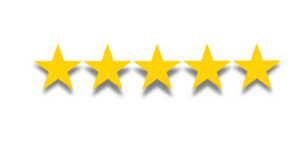
Join us next week for another episode of Business Infrastructure with Alicia Butler Pierre.
![]()
![]()


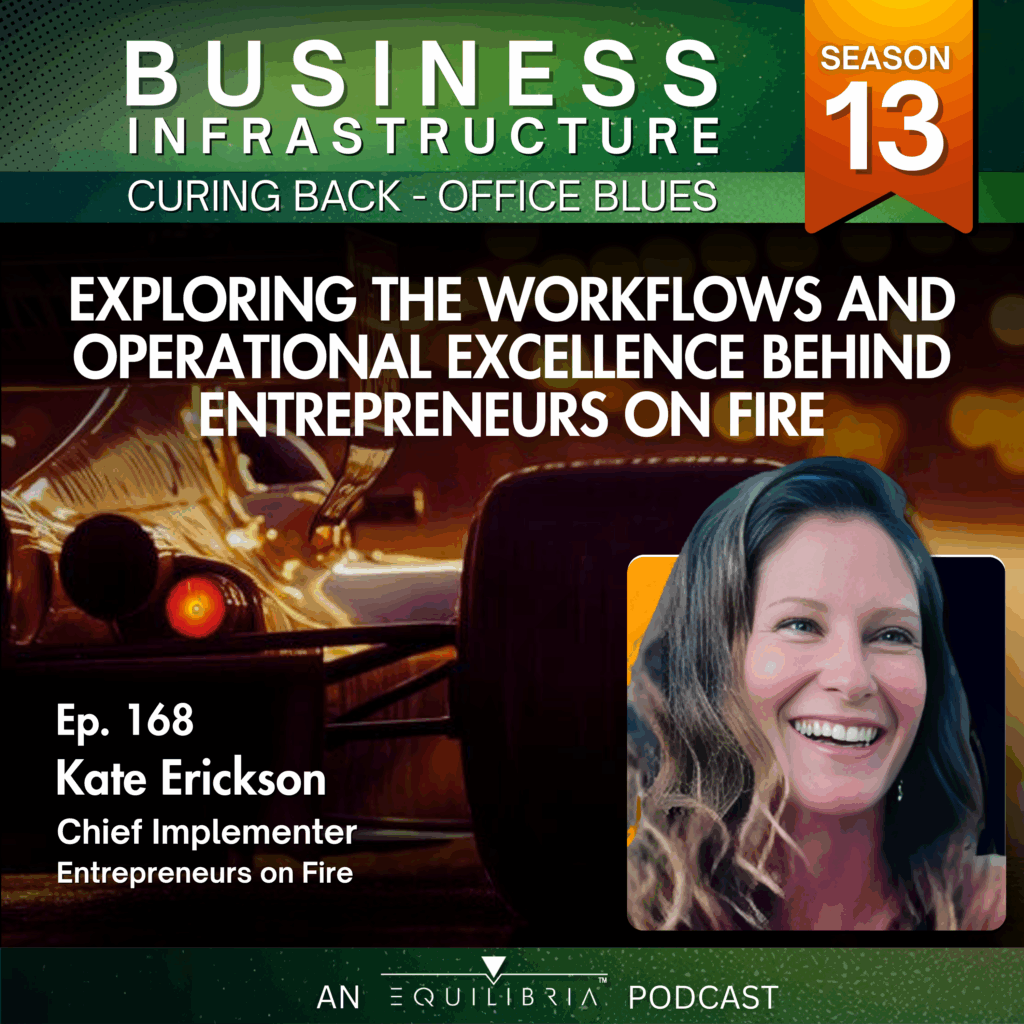

 I do. Acuity.
I do. Acuity.


